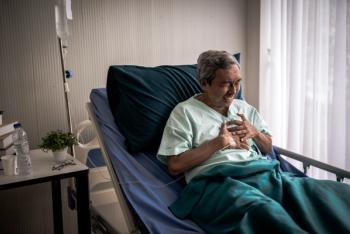
For Patients With Pulmonary Hypertension, Access to Care and Air Quality Are Key Factors in Survival: Lucilla Piccari, MD, PhD
Social inequalities significantly impact COPD and PH outcomes, highlighting the need for systemic health care solutions, emphasizes Lucilla Piccari, MD, PhD, Hospital del Mar.
Captions were auto-generated.
At the
Socioeconomic status and access to care are critical determinants of survival in patients with PH, she explains. Research shows that individuals with lower insurance status or lower socioeconomic status face a doubled mortality risk compared with their more advantaged counterparts. Race and ethnicity are also influential, primarily through their connection to care access, she noted, adding that it’s important to scrutinize the importance of intersectionality—the compounding effect of multiple coexisting social disadvantages—and that comprehensive studies examining all these factors together are still needed.
Environmental factors, particularly air pollution, also play a significant role in PH outcomes, she says. Exposure to higher levels of particulate matter and black carbon is associated with an increased mortality risk score. “These patients who are exposed to higher levels of particulate matter and black carbon, in certain studies, have higher risk assessment,” she states, adding that patients living near major roads often exhibit reduced exercise tolerance, as measured by the 6-minute walk test. This connection is particularly concerning given that air pollution is a major risk factor for chronic obstructive pulmonary disease (COPD) in nonsmokers and is linked to approximately 8% of global COPD deaths. Addressing these challenges requires more than individual patient actions like wearing masks or using home air filters.
Piccari also emphasized that these are systemic problems demanding systemic solutions. “The biggest and most important work relies on the shoulders of the health care system and also of the communities…to implement policies that protect vulnerable patients,” she explained. She stressed that such policies do not need to hinder industrial progress, as effective and cost-effective solutions to improve air quality without relying on fossil fuels are already available. To better understand and address these complex interactions, a national study is being launched in Spain to investigate how these multiple factors collectively determine patient outcomes.
Newsletter
Stay ahead of policy, cost, and value—subscribe to AJMC for expert insights at the intersection of clinical care and health economics.







































